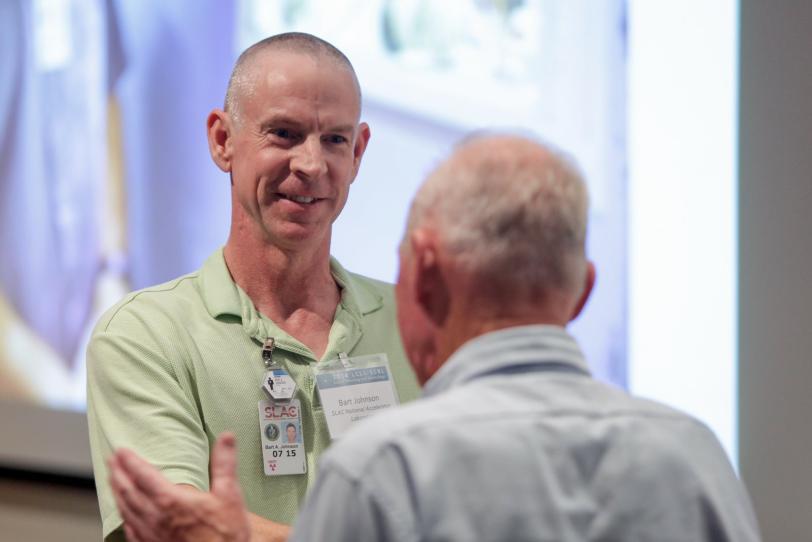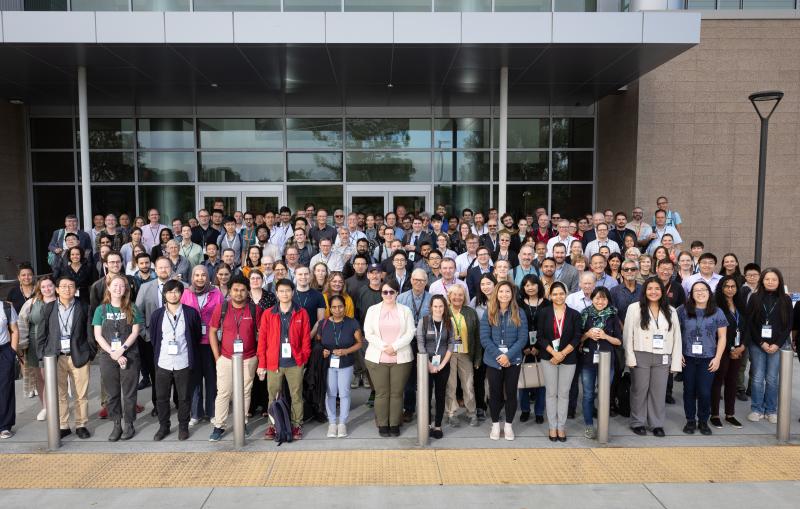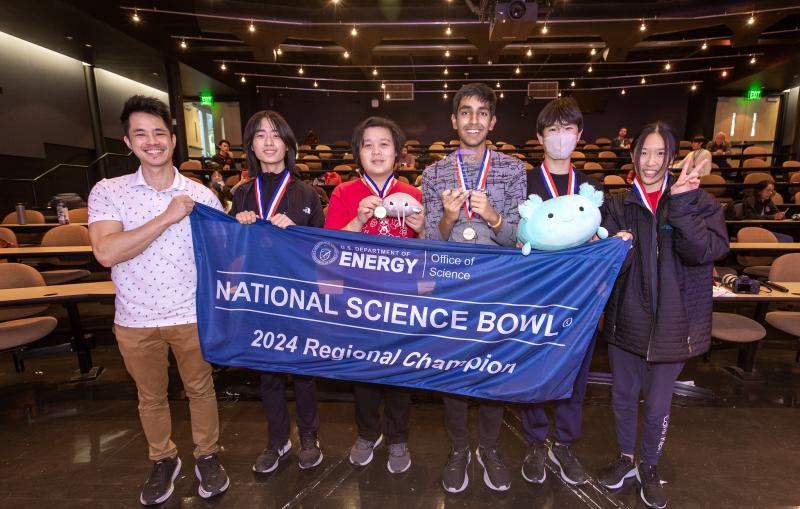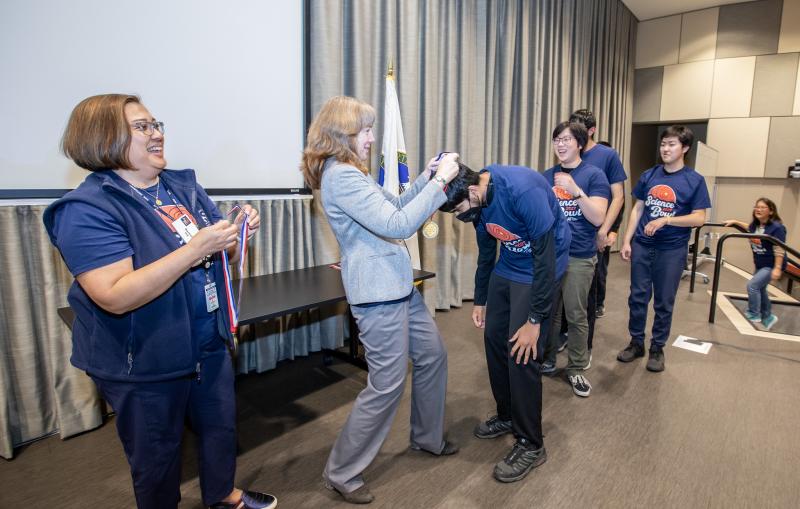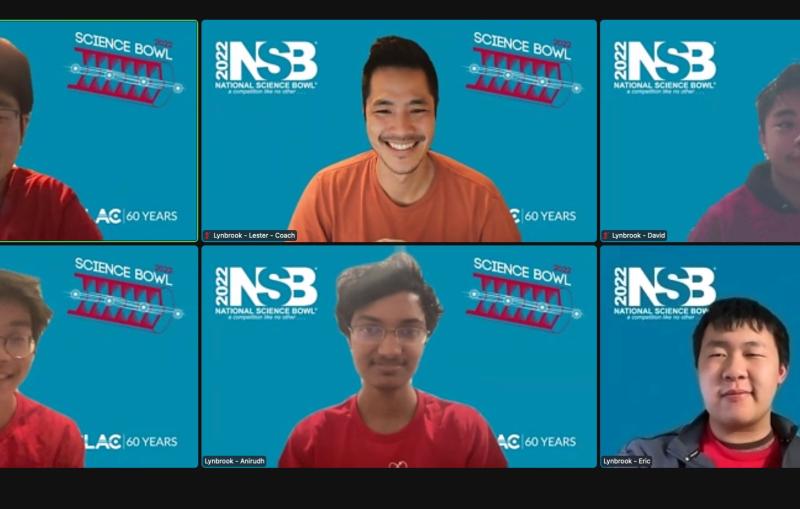SLAC's Bart Johnson Receives 2014 Farrel W. Lytle Award
Johnson and his team assist scientists with synchrotron experiments and work to keep X-ray beamlines running at SLAC.
Bart Johnson, who for the past 18 years has worked with his team to assist scientists with their synchrotron experiments and keep X-ray beamlines running at the Department of Energy's SLAC National Accelerator Laboratory, received an annual award Oct. 9 recognizing his efforts.
He is the latest recipient of the Farrel W. Lytle Award, which celebrates achievements in synchrotron-based science and efforts to foster collaboration and make the best use of experimental time for both staff and visiting scientists at the Stanford Synchrotron Radiation Lightsource (SSRL), a DOE Office of Science User Facility,
Johnson runs beamline operations and Materials Science Division X-ray support at SSRL. His group is responsible for readying beamlines and equipment and engaging with scientists who conduct experiments on SSRL materials science X-ray beamlines.
"This means so much to me and to my group, too," Johnson said upon receiving the award during a ceremony at SLAC's LCLS/SSRL Annual Users’ Meeting and Workshops, which ended Oct. 10.
‘A Team Award’
Johnson manages a team of beamline duty operators, engineers and technicians.
"I can't help but feel it's a team award – it takes the whole team to make it work," he said. "SSRL is known specifically for its support. A lot of our users return because they know they'll get the support they're accustomed to and they'll leave with the data quality they're accustomed to. This award recognizes our contributions to that effort."
He added that the tight-knit group of staff and the scientists who come from all over the world keep his job fun and exciting: "My wife said when she was here, 'It seems like the United Nations around here.' There are so many people from around the world. It's one of the things I really enjoy. And of course the science is important and we all take a sense of pride in contributing to it."
One letter of endorsement for the award noted that Johnson is known for his troubleshooting skills and work behind the scenes that ensure X-ray beamlines at SSRL produce high-quality, stable beams for experimenters.
Helping Scientists Succeed
Johnson, an engineering physicist, for several years has directly assisted experiments at SSRL Beam Line 6-2, which has been used to image samples, including fossils and artifacts, and produce detailed images that pinpoint the locations of specific chemical elements. He will move to another beamline when SSRL restarts in November after a routine shutdown for maintenance.
At the awards ceremony he shook hands with the award’s namesake, Farrel Lytle, 80, who got his start at SSRL in 1974. Lytle is a Nevada resident and former Boeing researcher known for his pioneering contributions to X-ray spectroscopy.
Lytle remains active in scientific research; he applies X-ray techniques to find the ages of ancient rock drawings based on trace bacteria-related elements in the rocks. He and his wife, Manetta – the couple have been friends since they were 5 – "are still playing around," Lytle joked, collecting rocks for research during their desert hikes.
For questions or comments, contact the SLAC Office of Communications at communications@slac.stanford.edu.
SLAC is a multi-program laboratory exploring frontier questions in photon science, astrophysics, particle physics and accelerator research. Located in Menlo Park, Calif., SLAC is operated by Stanford University for the U.S. Department of Energy's Office of Science.
SLAC National Accelerator Laboratory is supported by the Office of Science of the U.S. Department of Energy. The Office of Science is the single largest supporter of basic research in the physical sciences in the United States, and is working to address some of the most pressing challenges of our time. For more information, please visit science.energy.gov.
